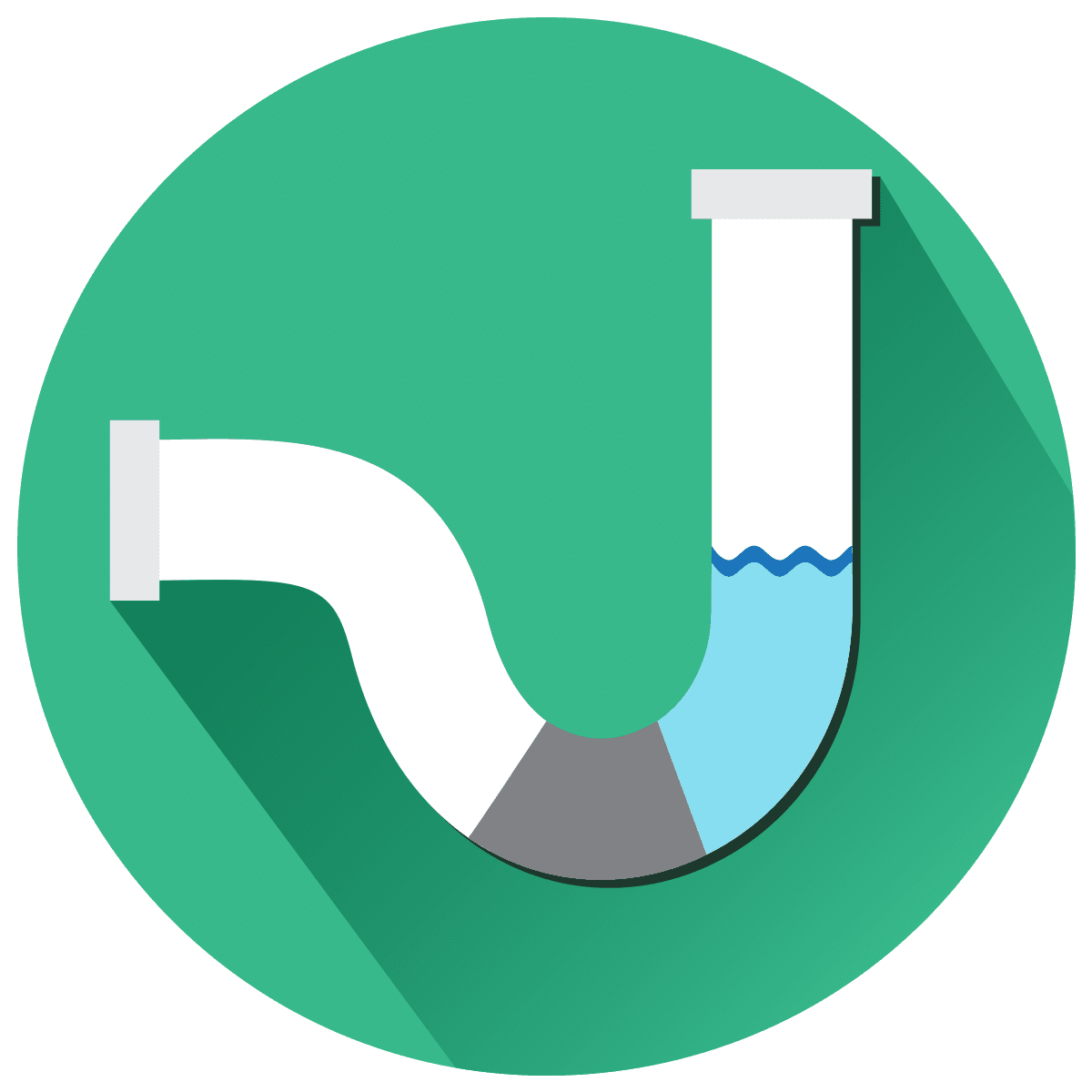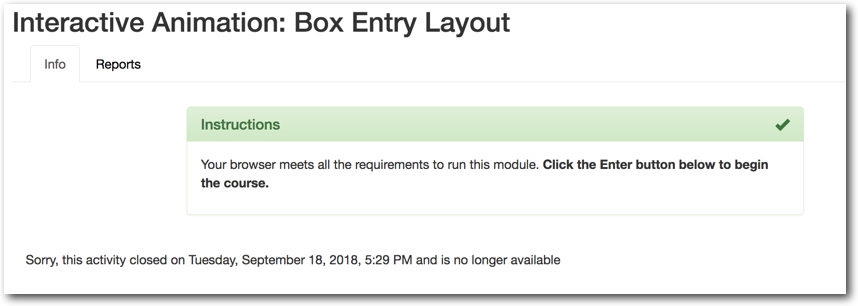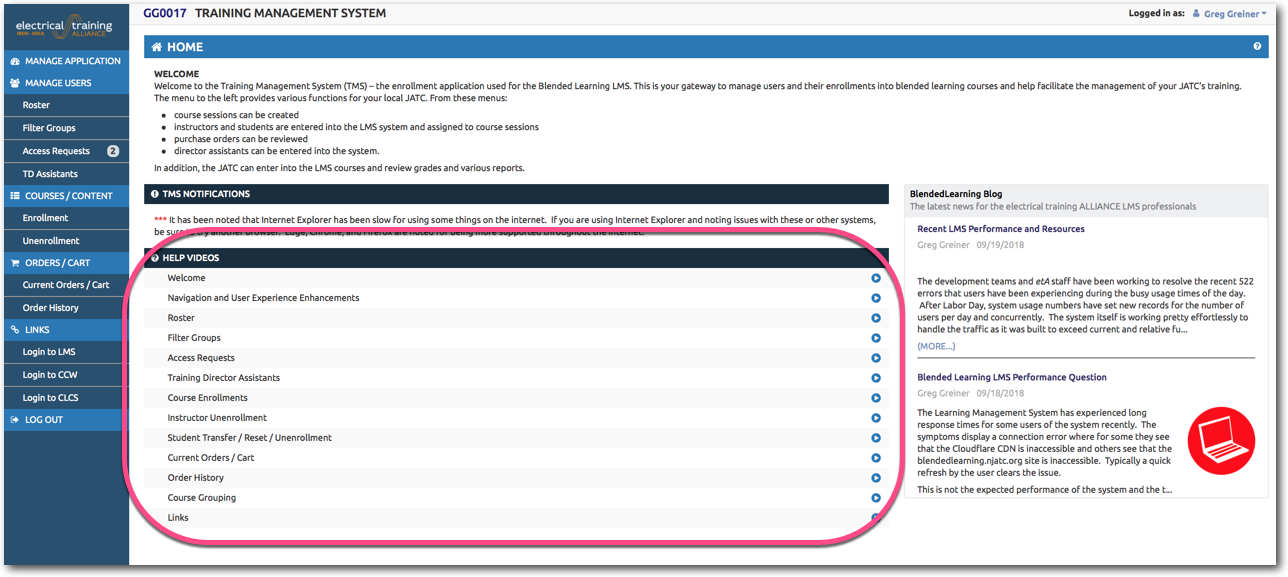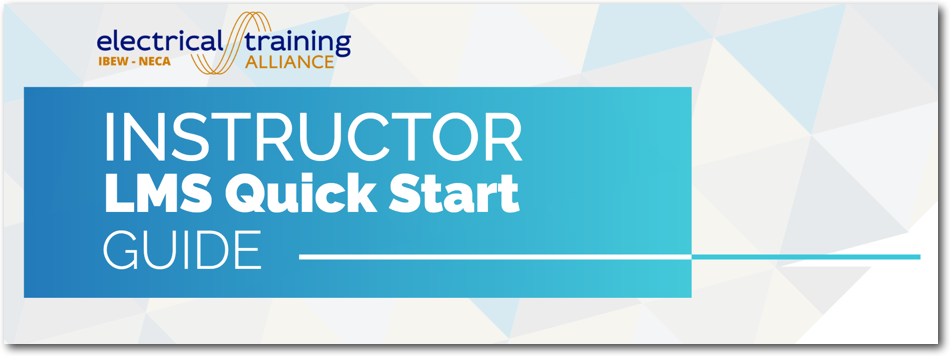 This message is to bring a bit of clarity to the recent changes (media file closings and removals) that were made to the system to resolve the timeout issues experienced by the LMS a few weeks ago.
This message is to bring a bit of clarity to the recent changes (media file closings and removals) that were made to the system to resolve the timeout issues experienced by the LMS a few weeks ago.
We have thousands of media clips and interactive animations placed throughout the system in various lessons and courses. Some of these tools were built as much as 7 and 8 years ago. At that time, as with much of the internet, files with video streaming directly from the server, often with the entire file required to be downloaded prior to display was common. Buffering….another common thing to see, was and is a mitigation tool for what can become slow downloads.
Advances in delivery methods, cacheing, file creation and delivery have all changed over the past few years. First, with better internet bandwidth and intelligence across the board, files are built to be page loaded a single page at a time. This utilizes less local and server bandwidth when the user only watches or uses portions of a file. A place this can be commonly compared to is how an LMS quiz is displayed. Each question is a page and by pressing next the next question (page) is loaded. This lessens the burden on the pipeline locally as well as globally. Also in some cases, media files were built where the full file was always downloaded no matter how little or how much or it was viewed by the user. Now only the part that is displayed is actually downloaded.
 Second, much of the internet utilizes an outgoing technology called Flash. Flash was/is a technology that has been around for decades and was universally utilized to build interactive online tools. It was a great technology for showing animation, video and interaction. It did however require the full download each time and also is making its way off the internet in favor of
Second, much of the internet utilizes an outgoing technology called Flash. Flash was/is a technology that has been around for decades and was universally utilized to build interactive online tools. It was a great technology for showing animation, video and interaction. It did however require the full download each time and also is making its way off the internet in favor of  new technology. Unity was also another extensively used method of creation and delivery for online resources. This too has been moved away from. Conversion to HTML5 as a suitable replacement has taken time, but continues to be the method for delivering new media.
new technology. Unity was also another extensively used method of creation and delivery for online resources. This too has been moved away from. Conversion to HTML5 as a suitable replacement has taken time, but continues to be the method for delivering new media.
![]() Finally, methods for delivering video have evolved. Embedding video within an interactive animation or simple animation was common at one time. This process made the video stream directly from the hosting server. Streaming services like YouTube and Vimeo have been present for some time, but the need of utilizing outside players for contained media content was at one time deemed unnecessary. Now it is common place. Our LMS utilizes Vimeo, among others, as it’s main resource for housing video content. This allows the LMS servers to be utilized for a more focused support of user access control, quiz engine utilization, recording and reporting, while offloading the video streaming load.
Finally, methods for delivering video have evolved. Embedding video within an interactive animation or simple animation was common at one time. This process made the video stream directly from the hosting server. Streaming services like YouTube and Vimeo have been present for some time, but the need of utilizing outside players for contained media content was at one time deemed unnecessary. Now it is common place. Our LMS utilizes Vimeo, among others, as it’s main resource for housing video content. This allows the LMS servers to be utilized for a more focused support of user access control, quiz engine utilization, recording and reporting, while offloading the video streaming load.
Based on the info above…
 We found that some of these older files, built with the technology methods of the time, when clicked on by users, could clog the internet pipeline. This was causing timeout issues for some and thus making access to anything for those users denied. Methodically we reviewed all files on the system and set Closing dates to these older files. We did this for a few reasons.
We found that some of these older files, built with the technology methods of the time, when clicked on by users, could clog the internet pipeline. This was causing timeout issues for some and thus making access to anything for those users denied. Methodically we reviewed all files on the system and set Closing dates to these older files. We did this for a few reasons.
- By setting a closing date, the user would see a message on the screen to tell them the item was closed.

- If we could later identify that the item could indeed be turned back on, we would have saved the time and effort it takes for removing and reloading the object.
- By closing it, the item cannot be clicked on to load and as a part of our troubleshooting the timeouts, we were still searching a bit to identify the exact cause. Closing the items was much like opening a circuit midstream to the last device and checking to see if the fault is upstream or downstream from that point.
And now to the affect on the system
A number of items across some courses were closed. This will be noted after clicking to review the file and noting a message on the screen like the Box Entry Layout image above. An area hard hit was the LMS Instructor Course. As stated in a prior post, none of the modules are currently active.

ALLIANCE staff have been for months working through all of the media files on the LMS to update, modify, and replace them, as this is part of continuous maintenance to the content. The LMS Instructor course will also undergo a revision aligning itself with the current system updates and tools. As a timeline for completion is identified, an announcement will be posted here to keep you informed. In the absence of an LMS Instructor course, it is suggested for Administrators of the system to review the help/explainer videos on the landing page to the Training Management System (TMS). There on the landing page, access to videos for every major aspect of the system is available.
 For Instructors, it is suggested that reviewing the docs placed on the LMS User Resources page will support much in the way of explaining the LMS. This page is accessible from the top of this blog as well as linked here.
For Instructors, it is suggested that reviewing the docs placed on the LMS User Resources page will support much in the way of explaining the LMS. This page is accessible from the top of this blog as well as linked here.
There are quick start guides for each user roll, plus multiple other important tools that are kept up to date as the system evolves.
![]() We do apologize for any inconvenience this causes you in your training efforts for the closing of a few of the fun media files, and again, are working hard to replace them with updated items. We have verified no required reference material or quiz item was affected in these support changes. These closings were all related to a few of the augmented materials built in this older formatting.
We do apologize for any inconvenience this causes you in your training efforts for the closing of a few of the fun media files, and again, are working hard to replace them with updated items. We have verified no required reference material or quiz item was affected in these support changes. These closings were all related to a few of the augmented materials built in this older formatting.

